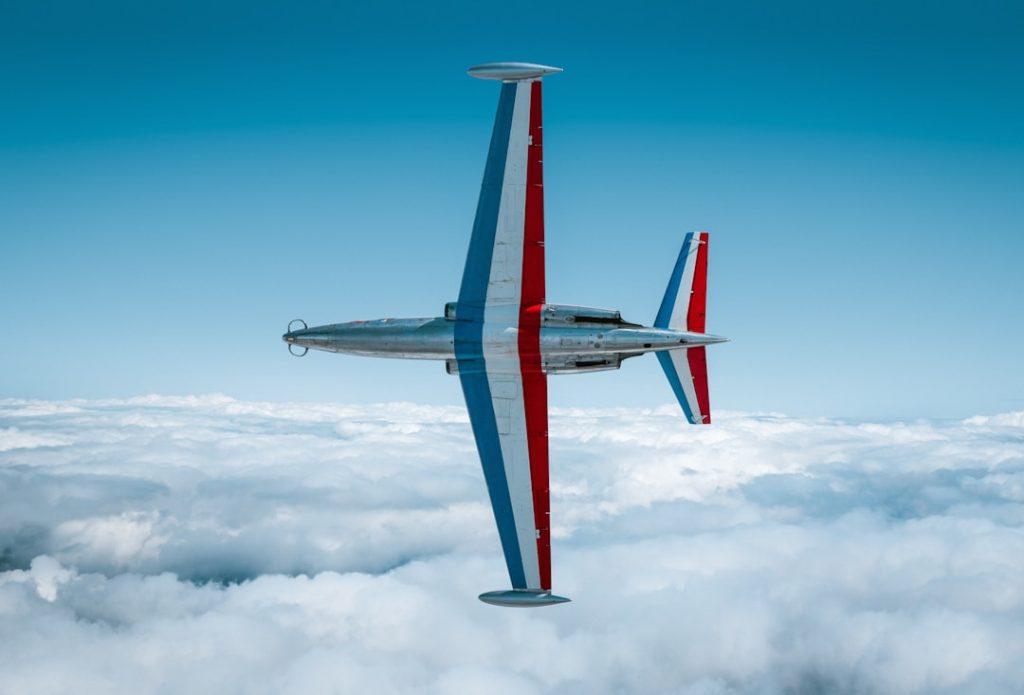Aerodynamics is the branch of fluid dynamics that deals with the behavior of air as it interacts with solid objects, particularly those that are in motion. At its core, aerodynamics seeks to understand how air flows around objects and how this flow can be manipulated to achieve desired outcomes, such as reduced drag or increased lift. The fundamental principles of aerodynamics are rooted in physics, particularly Newton’s laws of motion and Bernoulli’s principle, which describes the relationship between the speed of a fluid and its pressure.
These principles are crucial for various applications, from aviation to automotive design, and even in sports. The study of aerodynamics encompasses several key concepts, including lift, drag, thrust, and weight. Lift is the force that acts perpendicular to the direction of motion and is essential for flight; it is generated by the shape of an aircraft’s wings.
Drag, on the other hand, is the resistance an object encounters as it moves through air, which can significantly affect performance and efficiency. Thrust is the force that propels an object forward, while weight is the force due to gravity acting on the object. Understanding these forces and their interactions is vital for engineers and designers who aim to optimize performance in various fields.
Key Takeaways
- Aerodynamics is the study of how air moves around objects and plays a crucial role in the performance of vehicles and other objects.
- Aerodynamic engineering is essential for improving the speed, efficiency, and performance of vehicles, including cars, airplanes, and bicycles.
- Key principles of aerodynamic engineering include reducing drag, managing airflow, and optimizing the shape and design of vehicles.
- Aerodynamics has a significant impact on different vehicles, influencing factors such as fuel efficiency, stability, and overall performance.
- Innovations in aerodynamic engineering, such as advanced materials and computational modeling, continue to drive breakthroughs in vehicle design and performance.
The Role of Aerodynamic Engineering in Performance
Aerodynamic engineering plays a pivotal role in enhancing the performance of vehicles, aircraft, and even structures. By applying aerodynamic principles, engineers can design vehicles that minimize drag and maximize efficiency. For instance, in the automotive industry, manufacturers invest heavily in wind tunnel testing to refine vehicle shapes that reduce air resistance.
A well-designed car can achieve better fuel efficiency and higher speeds simply by optimizing its aerodynamic profile. This is particularly important in competitive racing, where even minor improvements in aerodynamics can lead to significant advantages on the track. In aviation, aerodynamic engineering is crucial for ensuring that aircraft can achieve and maintain flight.
The design of wings, fuselage shapes, and control surfaces must all consider aerodynamic forces to ensure stability and control during flight. Engineers use computational fluid dynamics (CFD) simulations alongside physical wind tunnel tests to predict how air will flow around an aircraft. This allows for the optimization of designs before they are built, saving time and resources while improving safety and performance.
Designing for Speed: Key Principles of Aerodynamic Engineering

When it comes to designing for speed, several key principles guide aerodynamic engineering. One of the most critical aspects is streamlining, which involves shaping an object to allow air to flow smoothly over its surface. A streamlined shape reduces turbulence and drag, enabling faster movement through the air.
For example, the teardrop shape is often cited as one of the most aerodynamically efficient forms because it minimizes wake turbulence behind the object. Another important principle is the concept of surface roughness. The texture of a vehicle’s surface can significantly impact its aerodynamic performance.
A smooth surface allows for a more laminar flow of air, reducing drag. Conversely, a rough surface can create turbulence that increases drag. Engineers often use advanced materials and coatings to achieve optimal surface characteristics that enhance performance.
Additionally, understanding the angle of attack—the angle between the oncoming air and a reference line on the object—is crucial for maximizing lift while minimizing drag.
The Impact of Aerodynamics on Different Vehicles
| Vehicle Type | Aerodynamic Impact | Result |
|---|---|---|
| Car | Reduced drag coefficient | Improved fuel efficiency |
| Truck | Streamlined design | Enhanced stability and reduced wind resistance |
| Motorcycle | Improved wind deflection | Enhanced rider comfort and reduced wind noise |
| Aircraft | Optimized wing shape | Increased lift and reduced drag |
Aerodynamics affects a wide range of vehicles beyond just cars and airplanes; it also plays a significant role in motorcycles, bicycles, boats, and even trains. In motorcycles, for instance, riders often adopt a crouched position to reduce their frontal area and minimize drag while traveling at high speeds. Manufacturers design fairings—streamlined covers that reduce wind resistance—into their models to enhance performance.
Bicycles also benefit from aerodynamic design principles. Competitive cyclists often wear tight-fitting clothing and use specially designed helmets to reduce drag. The shape of the bicycle frame itself can be optimized for airflow, allowing riders to achieve higher speeds with less effort.
In marine applications, boat hull designs are crafted to minimize drag through water, which is denser than air but follows similar aerodynamic principles. Trains have also seen significant advancements in aerodynamic design. High-speed trains utilize streamlined shapes to reduce air resistance at high velocities.
The nose of a train is often elongated and tapered to minimize drag as it cuts through the air. This not only improves speed but also enhances energy efficiency, making high-speed rail systems more viable as sustainable transportation options.
Innovations in Aerodynamic Engineering: Advancements and Breakthroughs
The field of aerodynamic engineering has witnessed numerous innovations over the years that have transformed how vehicles are designed and operated. One notable advancement is the use of computational fluid dynamics (CFD) software, which allows engineers to simulate airflow around objects with incredible precision. This technology has revolutionized the design process by enabling rapid prototyping and testing without the need for extensive physical models.
Another breakthrough has been in materials science, where lightweight yet strong materials such as carbon fiber composites have become increasingly popular in vehicle construction. These materials not only reduce weight—thereby improving speed and efficiency—but also allow for more complex shapes that can enhance aerodynamic performance. Additionally, advancements in 3D printing technology have enabled engineers to create intricate designs that were previously impossible or prohibitively expensive to manufacture.
The automotive industry has also seen innovations such as active aerodynamics, where components like spoilers or vents adjust dynamically based on speed and driving conditions. This technology allows vehicles to optimize their aerodynamic profile in real-time, improving performance across various scenarios.
The Future of Aerodynamic Engineering: Trends and Developments

As technology continues to evolve, so too does the field of aerodynamic engineering. One significant trend is the increasing integration of artificial intelligence (AI) into design processes. AI algorithms can analyze vast amounts of data from simulations and real-world tests to identify optimal designs more quickly than traditional methods.
This capability not only accelerates development timelines but also leads to more innovative solutions that push the boundaries of what is possible in aerodynamics. Sustainability is another driving force behind future developments in aerodynamic engineering. As concerns about climate change grow, there is a pressing need for vehicles that consume less energy and produce fewer emissions.
Engineers are focusing on creating designs that maximize fuel efficiency while minimizing environmental impact. This includes exploring alternative energy sources such as electric propulsion systems that require different aerodynamic considerations compared to traditional combustion engines. Moreover, advancements in renewable energy technologies are influencing aerodynamic design as well.
For instance, wind turbines are being designed with aerodynamics in mind to maximize energy capture while minimizing structural loads. The principles learned from vehicle aerodynamics are being applied across various industries as engineers seek to harness wind energy more effectively.
Applying Aerodynamic Principles to Everyday Life
Aerodynamic principles extend beyond high-performance vehicles and aircraft; they can be applied to everyday life in various ways. For instance, understanding airflow can improve energy efficiency in buildings by optimizing their shapes and orientations relative to prevailing winds. Architects can design structures that minimize wind resistance while maximizing natural ventilation, leading to reduced energy consumption for heating and cooling.
In sports, athletes often leverage aerodynamic principles to enhance their performance. Cyclists use streamlined helmets and clothing designed specifically to reduce drag during races. Swimmers employ body positioning techniques that minimize resistance in water, while runners may choose footwear designed with aerodynamic features to improve speed.
Even in consumer products like bicycles or recreational vehicles, manufacturers are increasingly considering aerodynamics in their designs. For example, electric scooters are being shaped not only for aesthetic appeal but also for optimal airflow to enhance battery efficiency during travel.
The Importance of Aerodynamic Engineering in Sustainable Transportation
As global awareness of environmental issues rises, aerodynamic engineering plays a crucial role in developing sustainable transportation solutions. By optimizing vehicle designs for fuel efficiency and reduced emissions, engineers contribute significantly to efforts aimed at combating climate change. Electric vehicles (EVs), for instance, benefit greatly from aerodynamic enhancements that extend their range by reducing energy consumption during travel.
Public transportation systems are also being reimagined with aerodynamics in mind. High-speed trains designed with streamlined profiles not only travel faster but also consume less energy per passenger mile compared to traditional rail systems or automobiles. This shift towards efficient public transport options can help alleviate traffic congestion while reducing overall carbon footprints.
Furthermore, advancements in drone technology highlight how aerodynamic engineering can facilitate sustainable logistics solutions. Drones designed with optimal aerodynamics can deliver goods more efficiently over short distances, reducing reliance on traditional delivery vehicles that contribute to urban congestion and pollution. In conclusion, aerodynamic engineering is a multifaceted discipline that impacts various aspects of modern life—from transportation to architecture and beyond.
As technology advances and sustainability becomes increasingly paramount, the principles of aerodynamics will continue to shape our world in innovative ways.


